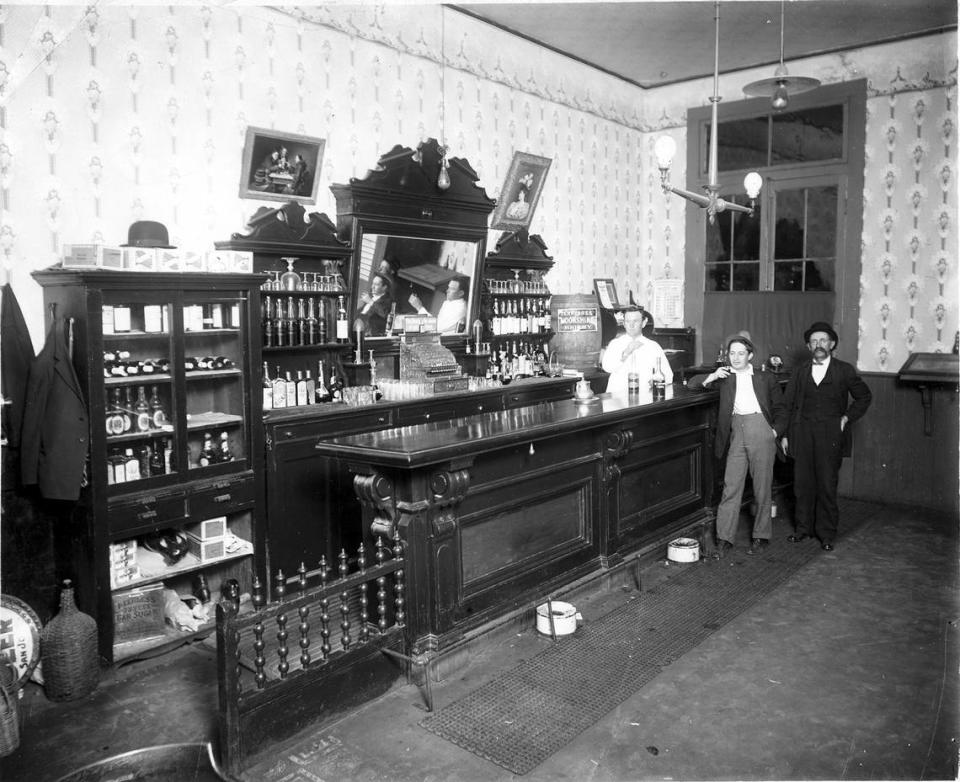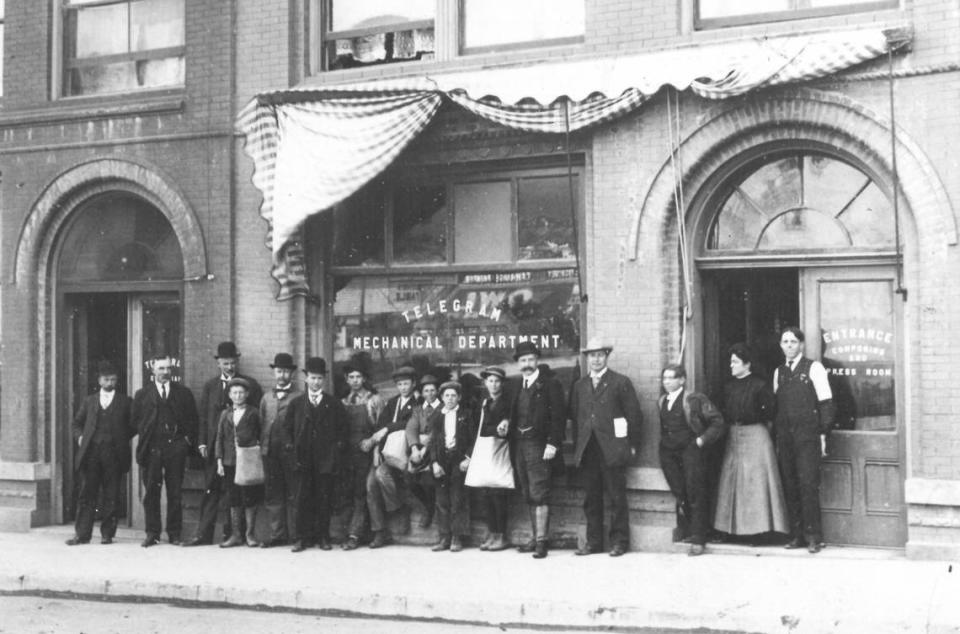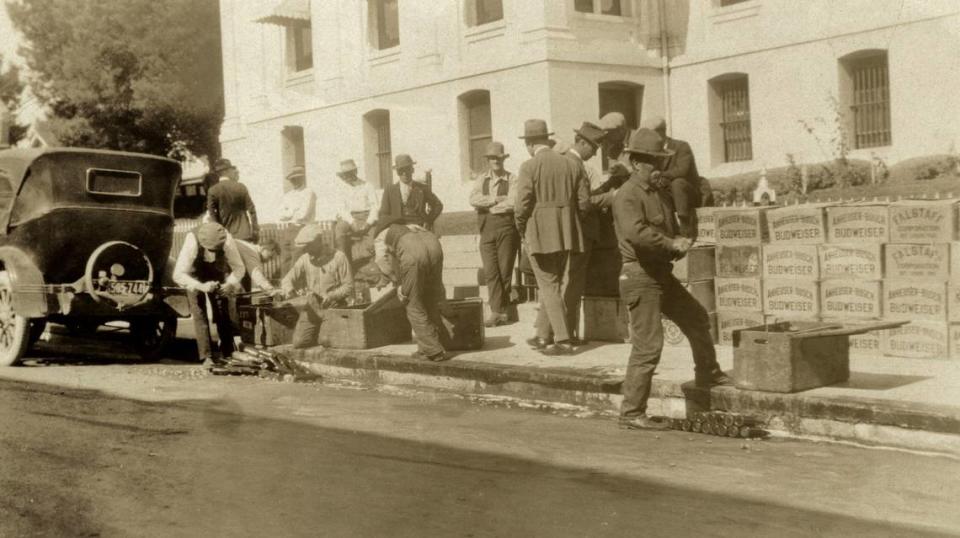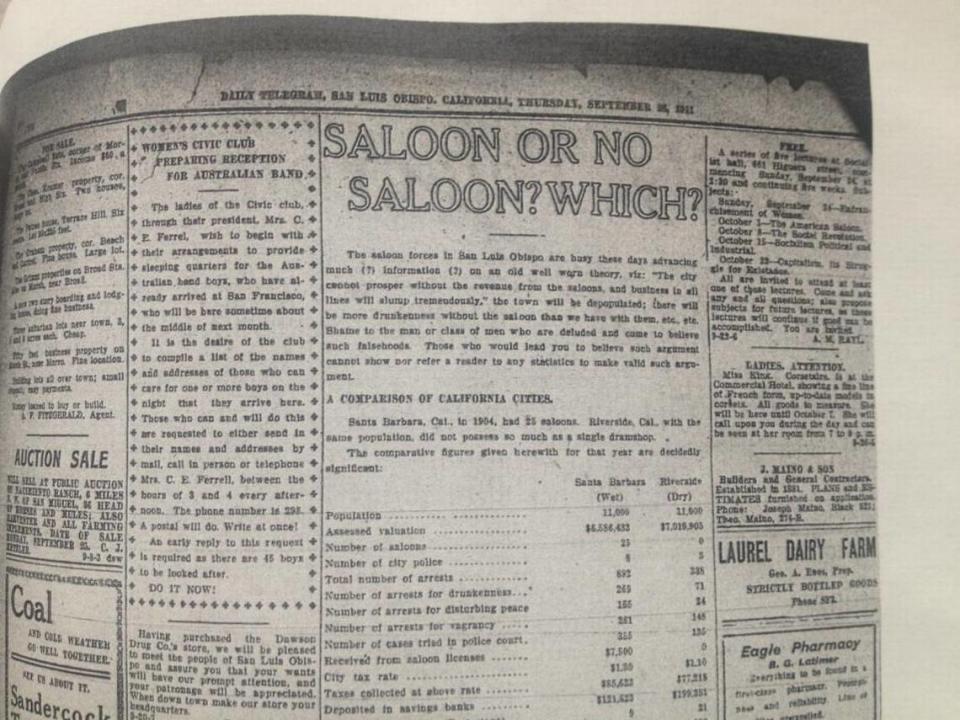Grandma didn’t like wine. Maybe it was her Central Coast grandfather’s Prohibition-era bust?
My Grandma Betty was not a fan of wine.
She tolerated her husband’s occasional glass of wine at dinner — it was usually a tumbler of Pisenti poured from a screw-top gallon jug. Grandpa Lionel was not a wine snob.
Grandma Betty did not stock a wine cellar or grow wine grapes.
Perhaps part of her antipathy came from the notoriety that her grandfather achieved for wine making, not always legally.
The story I recall from family dinners was that Gustave Renkert was busted during Prohibition for having a few bottles of wine at his Tassajara Canyon ranch.
The story shared was that he refused to take a plea bargain and when it came time for trial, all the evidence — brought to town for safekeeping — had somehow evaporated from the evidence storage.
Without evidence the charges also evaporated.

On Dec. 5 America marked the 90th anniversary of the repeal of Prohibition that forbade transport, sale or making of alcoholic beverages.
The 21st Amendment repealed the 18th Amendment. The 18th was the only constitutional amendment in American history to be repealed and the only amendment written to remove rights rather than define or expand them.
The political and social intersections that led to Prohibition are fascinating, as well as the changes that came to society as a result.
For a deeper dive check out the book “Last Call: The Rise and Fall of Prohibition” by Daniel Okrent.
In a search via Newspapers.com, I was able to find the original story of Gustave’s arrest in the Daily Telegram.

The Telegram had been founded as an anti-liquor, Prohibition newspaper, though in later years under other owners it was less strident. There was also an anti-German bias that came during and after World War I. Liquor busts were treated as front-page news along with the usual 20 or so other stories.
It was more complicated tale than the story told at the dinner table — but interestingly I’ve so far been unable to find a follow-up story about the result of a trial.
Newspaper stories a few years later in the paper show Gustave at home, continuing living a normal life, so perhaps charges were dismissed or reduced.
A three-paragraph story was published Jan. 15, 1924, saying that after two different raids Mrs. A. Pieri and Gustave Renkert were charged with unlawful possession of intoxicating liquors.
It said the raid was far up in Tassajara Canyon, and the evidence was difficult to get out, but officers brought it to San Luis Obispo for “safe-keeping.”
An earlier story from Jan. 10, 1924, had more detail. This version corrects typos.

Officers find two big stills at Tassajara
Two stills, one of which is said to have been in actual operation, 23 barrels, or nearly 1,200 gallons of wine, and a quantity of prune brandy are claimed to have been taken in two raids in the Tassajara section near Santa Margarita yesterday by Investigator C.H. Wheeler, working out to the office of District Attorney Charles R. Nelson, and Deputy Sheriff Ray Evans.
Gustave Renkert is charged with unlawful possession of intoxicating liquors, while George Miller, said to be Renkert’s son-in-law, is facing three charges, unlawful possession of a still, unlawful possession of intoxicating liquor, and unlawful manufacture of intoxicating liquor.
Investigator Wheeler was working on information sent to the district attorney in a letter signed “Mrs. Renkert,” purporting to tell of alleged bootlegging activities of another woman in the district, when he found clues which led him to the Renkert place and also to the Miller place, these two ranches being connected by a well-beaten path, it is said.

This path is believed by officers to indicate that Renkert and Miller probably were working together.
At the Renkert place, a still which was not in working condition, is said to have been found. In addition, 23 barrels of wine, part of which was cached in an old chrome mine, is said to have been located.
At the Miller place, Wheeler is said to have found a still in operation, with the alleged moonshine prune brandy running from the spout. A large number of prune pits, said by officers to indicate that the still had probably been used for some time, was also located.

